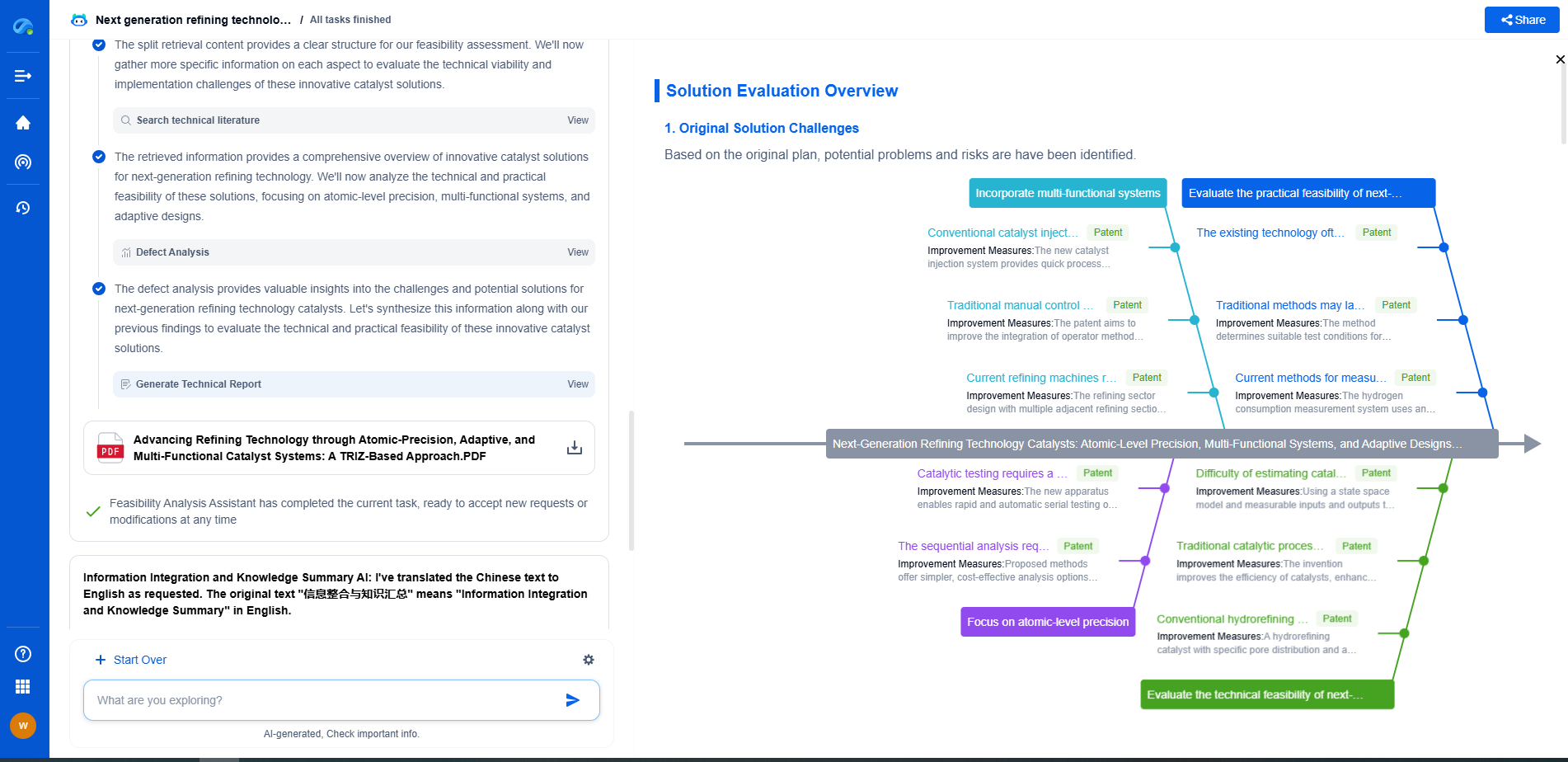SCARA vs Cartesian robots: Which one is better for pick-and-place?
JUN 26, 2025 |
When it comes to automating pick-and-place processes, the choice of the right robot can significantly influence the efficiency and outcome of operations. Two popular contenders in this arena are SCARA (Selective Compliance Articulated Robot Arm) robots and Cartesian robots. Each has its unique strengths and limitations, making the decision not entirely straightforward. In this blog, we will delve into the characteristics, advantages, and potential drawbacks of SCARA and Cartesian robots to help you determine which is better suited for your pick-and-place needs.
Understanding SCARA Robots
SCARA robots are widely recognized for their speed and precision in assembly and pick-and-place tasks. Their design includes a rigid base with two parallel rotary joints that provide movement similar to a human arm. This allows SCARA robots to operate in a horizontal plane with great agility and accuracy.
Key Advantages of SCARA Robots
1. Speed and Precision: SCARA robots are renowned for their fast cycle times due to their lightweight arms and optimized movement paths. This makes them ideal for high-speed assembly lines and applications where precision is critical.
2. Compact Footprint: Due to their vertical design, SCARA robots occupy less floor space, making them suitable for environments where space is a constraint.
3. Flexibility in Movement: The articulated arm design allows for smooth and flexible movement, enabling SCARA robots to handle a variety of tasks, from simple pick-and-place operations to more complex assembly processes.
Potential Limitations
1. Limited Vertical Reach: The design of SCARA robots allows for excellent horizontal movement, but their vertical reach is relatively limited compared to Cartesian robots.
2. Complex Integration: Due to their complex kinematics, integrating SCARA robots into existing systems can sometimes require more sophisticated programming and control.
Exploring Cartesian Robots
Cartesian robots, known for their straightforward and linear movement, operate on three (or more) perpendicular axes: X, Y, and Z. This simple design translates into ease of programming and integration, making Cartesian robots a popular choice for various applications.
Key Advantages of Cartesian Robots
1. Simplicity and Accuracy: The linear motion of Cartesian robots ensures high accuracy and repeatability, particularly in applications that require precise placement over a large area.
2. Cost-Effectiveness: Cartesian robots are generally more affordable than SCARA robots due to their simpler design and lower manufacturing costs.
3. Large Work Envelope: The design allows for a large working area, particularly in the vertical direction, making Cartesian robots suitable for tasks that require significant vertical reach.
Potential Limitations
1. Speed Constraints: Cartesian robots are generally slower than SCARA robots due to their linear movement mechanics, making them less ideal for high-speed operations.
2. Larger Footprint: The linear design requires more space, which can be a limitation in environments where floor space is a premium.
Comparing SCARA and Cartesian Robots for Pick-and-Place
When deciding between SCARA and Cartesian robots for pick-and-place applications, several factors should be considered:
1. Task Complexity: If the tasks require complex movements and high-speed operations, SCARA robots are often the better choice. However, for simpler, linear tasks, Cartesian robots may suffice.
2. Space Availability: If you have limited floor space, the compact design of SCARA robots might be more advantageous. Cartesian robots, while effective, require more space due to their linear tracks.
3. Budget Considerations: Cartesian robots typically offer a more cost-effective solution due to their simpler design, which can be a crucial factor for businesses operating under tight budget constraints.
Conclusion
Both SCARA and Cartesian robots have their respective strengths and limitations. The decision ultimately depends on the specific requirements of your pick-and-place operations, including factors such as speed, precision, space, and budget. By carefully evaluating these aspects, businesses can select the robot that best aligns with their operational goals, ensuring improved efficiency and productivity in their automation processes.
Ready to Redefine Your Robotics R&D Workflow?
Whether you're designing next-generation robotic arms, optimizing manipulator kinematics, or mining patent data for innovation insights, Patsnap Eureka, our cutting-edge AI assistant, is built for R&D and IP professionals in high-tech industries, is built to accelerate every step of your journey.
No more getting buried in thousands of documents or wasting time on repetitive technical analysis. Our AI Agent helps R&D and IP teams in high-tech enterprises save hundreds of hours, reduce risk of oversight, and move from concept to prototype faster than ever before.
👉 Experience how AI can revolutionize your robotics innovation cycle. Explore Patsnap Eureka today and see the difference.
- R&D
- Intellectual Property
- Life Sciences
- Materials
- Tech Scout
- Unparalleled Data Quality
- Higher Quality Content
- 60% Fewer Hallucinations
Browse by: Latest US Patents, China's latest patents, Technical Efficacy Thesaurus, Application Domain, Technology Topic, Popular Technical Reports.
© 2025 PatSnap. All rights reserved.Legal|Privacy policy|Modern Slavery Act Transparency Statement|Sitemap|About US| Contact US: help@patsnap.com

